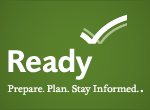Using Plain Language

In a crisis, people take in, process, and act on information differently than they would outside of an emergency. Effective communication during a crisis should be clear; it should empower people to take actions that will reduce risks to their health and wellbeing.
When people experience intense stress or information overload, they may miss important details in health and safety messages. During a crisis:
- People may not fully hear information because they can’t juggle multiple facts at once.
- People may not remember as much information as they normally could.
- People may misinterpret action messages that are confusing.
When public health guidance is difficult to understand or follow, people may resort to bad habits and long-held practices that could be harmful in an emergency situation. Using simple, plain language can help your messages reach the people who need to act on them.
In a crisis, every word counts. By understanding how people take in information during a crisis, we can better plan to communicate with them using simple messaging.
For more resources and materials on plain language, visit CDC's Plain Language site.
For more resources and information on CERC, please see Crisis and Emergency Risk Communication, 2014 Edition or Crisis and Emergency Risk Communication Pandemic Influenza, 2007.
Have you used CERC in your work? To share your CERC stories, e-mail cercrequest@cdc.gov. Your stories may appear in future CERC Corners.
- Page last reviewed: March 23, 2017
- Page last updated: March 23, 2017
- Content source:
- Maintained By:





 ShareCompartir
ShareCompartir